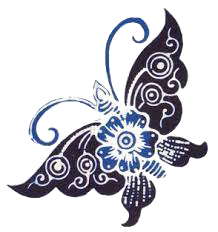The Philosophical Meaning of the Korpri Batik Uniform
November 29 is commemorated as Korpri Day or the Republic of Indonesia Civil Servant Corps. This day is designated as Korpri Day because it is in accordance with the date of Presidential Decree of the Republic of Indonesia Number 82 of 1971 concerning Korpri. Based on this Presidential Decree of the Republic of Indonesia, Korpri is the only forum to gather and develop all Indonesian employees outside of official duties. Korpri was formed so that Indonesian civil servants can participate in maintaining and strengthening dynamic political and social stability in the Republic of Indonesia.
Korpri has long been a symbol of professionalism and dedication of civil servants. One of the characteristics of Korpri is its batik uniform. The Korpri batik uniform is not only an identification mark, but also reflects the spirit and identity of a dynamic organization. To strengthen these values, the design of the Korpri batik uniform always follows the times. The Korpri batik uniform changes with the times.
Changes in the design of the Korpri batik uniform are driven by the desire to present a more modern and dynamic appearance. In addition, each design aims to instill a sense of pride and a spirit of togetherness. Each element in the design has a deep philosophical meaning.
The philosophical meaning of the Korpri batik uniform
The latest Korpri batik uniform design has a unique philosophy called Bhumi, Nusa, Segara. The Korpri bhumi batik uniform (golden) reflects the fertility of the archipelago and development based on the environment, nusa (light blue) about the islands and clean air in Indonesia, and segara symbolizes the ocean, where Indonesia is a maritime country.
This Korpri batik uniform has a concept of style used is batik motifs from Aceh (Sumatra), kawung (Java), body tattoo (Kalimantan), pa tedong or buffalo head (Sulawesi), and Cenderawasih bird (Papua).
Korpri batik uniform regulations
Korpri members wear Korpri batik uniforms for several activities, namely the Korpri anniversary ceremony, routine ceremonies on the 17th of every month, national holidays, meetings and gatherings organized by Korpri.
The Korpri batik uniforms used by male and female employees are slightly different. The Korpri shirt for men is a stand-up and open collar, long sleeves with cuffs, one inner pocket on the upper left, and five closed buttons. While the Korpri batik uniform for women is a sleeper and open collar, long sleeves with two buttons without cuffs, two inner pockets on the lower left and right closed, and four blouse buttons.
For female employees who do not wear the hijab, they are allowed to wear a skirt that reaches the knee. And for those who wear the hijab, the hijab used is dark blue.
Korpri Symbol
The Korpri symbol was created by Aming Prayitno, a painter born in Surakarta, June 9, 1943. Aming Prayitno is a lecturer in fine arts at the Indonesian Fine Arts College in Yogyakarta which is now called the Indonesian Art Institute in Yogyakarta.
In the Korpri symbol design competition, Aming Prayitno's design was selected as the winner by the Minister of Home Affairs and the General Chairperson of the Korpri Center at that time, Amir Machmud.
The Korpri symbol consists of three main elements, namely a tree, a house (in the form of a hall), and two wings. The tree with 17 branches, 8 branches, and 45 leaves symbolizes the role of KORPRI as a state apparatus since the proclamation of the independence of the Republic of Indonesia on 17-8-1945, namely as a protector and guardian of the state.
The house building in the form of a hall with five pillars symbolizes a place that unites all Korpri members, a glue for the nation in general to support the government of the Republic of Indonesia in achieving national goals based on Pancasila. While the large and strong wings symbolize the devotion and struggle of Korpri to realize an independent and professional organization.


